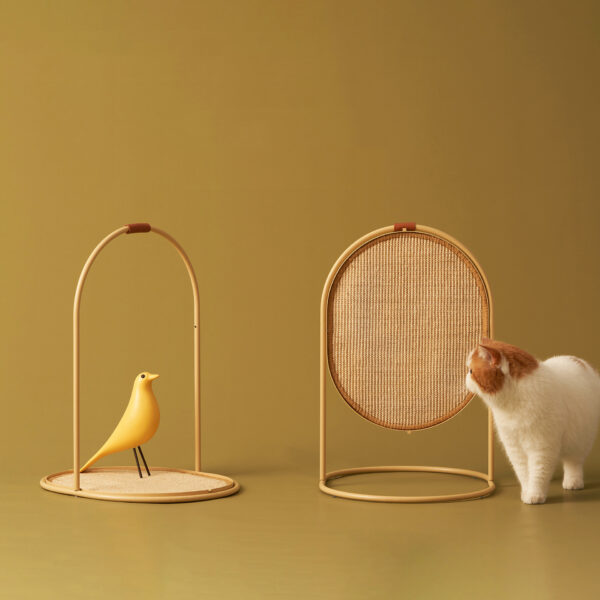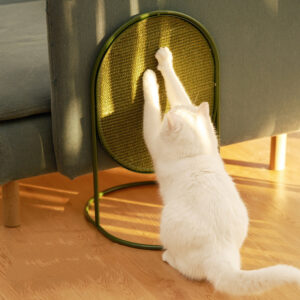
Discount up to 35% for first purchase only this month.
Account


Cats are naturally curious and energetic creatures, requiring mental and physical stimulation to thrive. A cat tree is an essential investment for any cat owner looking to provide their feline friend with entertainment, exercise, and personal space to feel safe and secure. These structures not only enhance a cat’s well-being but also help keep them from scratching furniture or getting bored. In this article, we’ll explore why cat trees are beneficial, how to choose the right one, and how they contribute to a healthier and happier cat.
Cat trees serve multiple purposes, making them a crucial addition to any cat-friendly home. Here’s why your feline companion needs one:
Cats need daily exercise to maintain a healthy weight and strong muscles. A cat tree with multiple levels encourages climbing, jumping, and stretching, keeping them physically engaged. Indoor cats, especially, benefit from a cat tree as they lack the natural environment to roam and explore like outdoor cats.
Cats are territorial animals that love having their own space. A cat tree gives them a sense of security by offering a high vantage point where they can observe their surroundings without feeling threatened. This is especially helpful in multi-pet households, allowing them to retreat to their own space when needed.
Cats have a natural instinct to climb, scratch, and perch. Without an appropriate outlet, they might turn to furniture, curtains, or countertops. A well-designed cat tree provides scratching posts, platforms, and cubbies to keep them entertained while preventing destructive behavior.
A cat tree can help reduce stress by offering a safe haven. Cats often feel overwhelmed in noisy or crowded environments, and having a dedicated spot where they can retreat helps them feel more at ease. It also minimizes conflicts among multiple cats by providing separate resting spaces.
Cat trees with built-in toys, dangling ropes, or hiding spots stimulate a cat’s mind, preventing boredom. This is especially important for indoor cats that don’t have access to natural stimuli like birds or insects outside. Mental engagement is just as important as physical exercise in keeping a cat happy.
Not all cat trees are created equal, and choosing the right one depends on several factors. Here’s what to consider:
Before purchasing a cat tree, assess the available space in your home. If you live in a small apartment, a compact, vertical tree with multiple levels might be a better fit. Larger homes can accommodate expansive cat trees with multiple towers, hammocks, and tunnels.
A cat tree should be sturdy enough to support your cat’s weight, especially if you have multiple cats. Look for high-quality materials such as solid wood or heavy-duty particle board. A wobbly or flimsy tree can be dangerous and discourage your cat from using it.
Most cat trees include scratching posts wrapped in sisal rope, which is an excellent material for claw maintenance. Ensure the scratching areas are durable and well-placed so your cat can enjoy them comfortably.
Cats love climbing and perching at different heights. A good cat tree should have multiple platforms, allowing your cat to explore and rest at varying elevations. The higher the perch, the more secure your cat will feel.
Look for cat trees with padded perches, cozy cubbies, or hammocks. Cats love to nap in comfortable spaces, and having a designated resting spot will make them more likely to use the tree regularly.
Some cats take to a new cat tree immediately, while others may need encouragement. Here’s how to help your cat transition smoothly:
Position the cat tree in an area where your cat already spends time. Cats are more likely to use it if it’s near a window or in their favorite corner.
Encourage exploration by placing treats, catnip, or toys on different levels of the tree. This makes the cat tree a positive and rewarding experience.
Cats are naturally curious but can also be wary of new objects. Allow your cat to explore the tree at their own pace without forcing them onto it.
Engage your cat with interactive play using wand toys or balls near the cat tree. This helps them associate the tree with fun and excitement.
A cat tree is more than just a piece of furniture—it’s an essential tool for keeping your cat happy, active, and mentally stimulated. Providing a safe space for climbing, scratching, and resting contributes to a healthier and more satisfied feline. Investing in a high-quality cat tree tailored to your cat’s needs will improve their overall well-being and keep them entertained for years to come. If you want a happier and more active cat, a cat tree is one of the best purchases you can make.
Most cats enjoy climbing and scratching, so they’re naturally inclined to use a cat tree. To encourage use, place it in a familiar area, add treats, and incorporate playtime.
Yes! Kittens benefit from cat trees as they help develop coordination and strength. For senior cats, choose a tree with lower platforms and ramps for easier access.
Vacuum regularly to remove fur and debris, wipe surfaces with pet-safe cleaning products, and replace worn-out scratching posts as needed.
Give your cat time to adjust. Use treats, catnip, or interactive play to make the tree more appealing. Moving it to a different location may also help.
Yes! A multi-level cat tree with multiple perches and cubbies allows several cats to share comfortably, reducing competition for space.